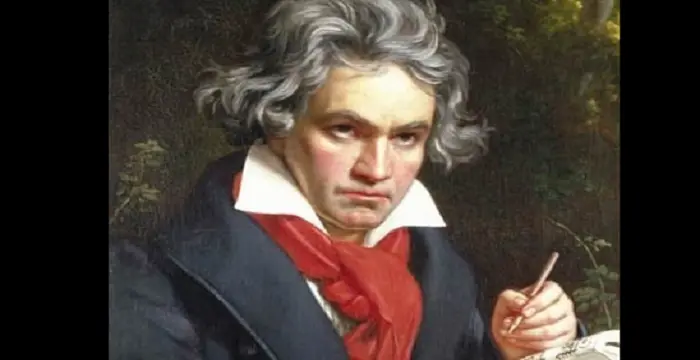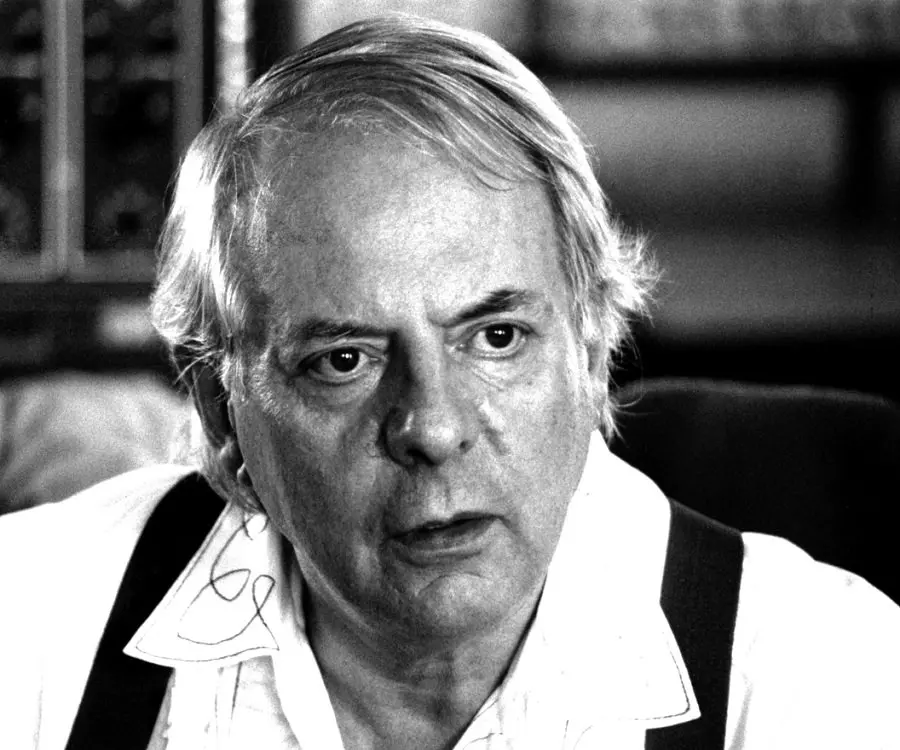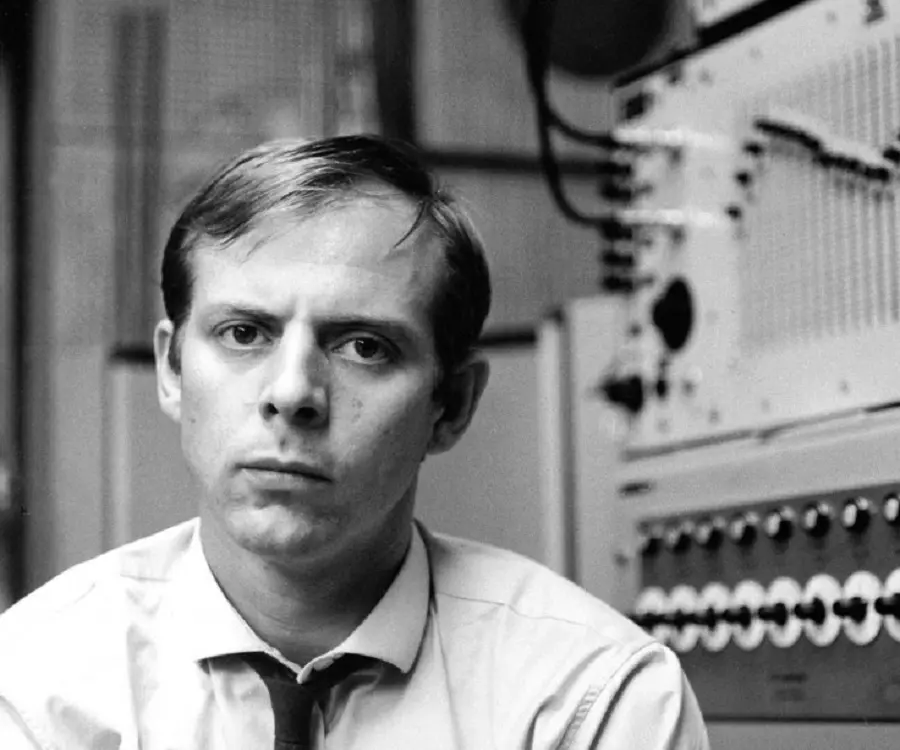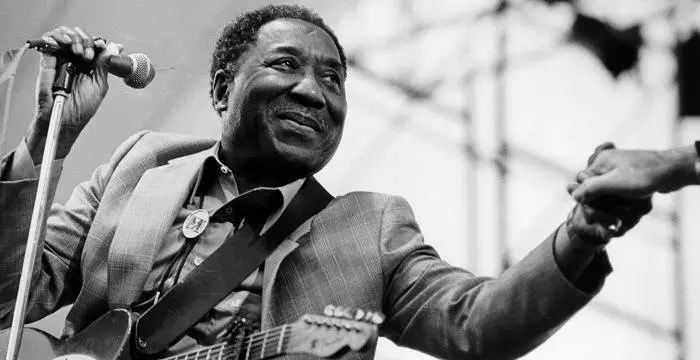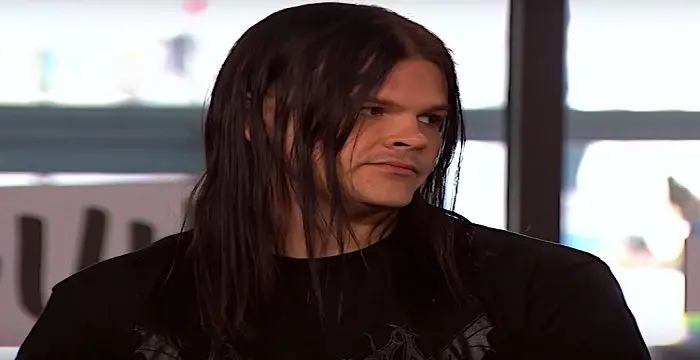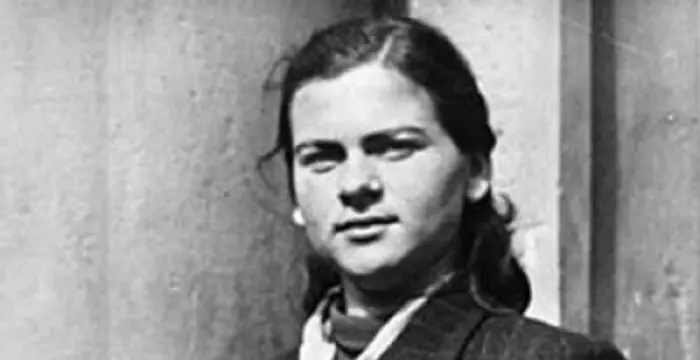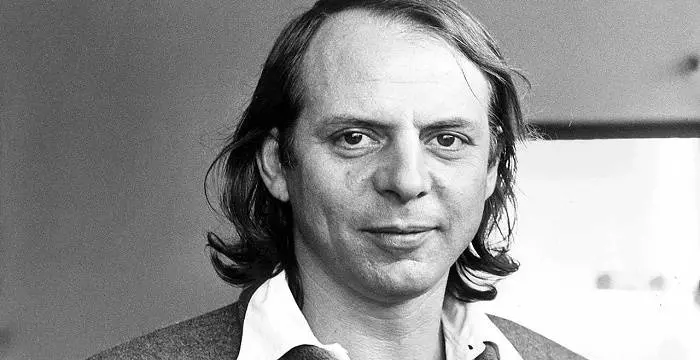
Karlheinz Stockhausen - Musicians, Career and Childhood
Karlheinz Stockhausen's Personal Details
German born composer, Karlheinz Stockhausen was one of the most influential composers of the 20th century
| Information | Detail |
|---|---|
| Birthday | August 22, 1928 |
| Died on | December 5, 2007 |
| Nationality | German |
| Famous | Musicians, Composers |
| Spouses | Doris Andreae (m. 1951), Mary Bauermeister (m. 1967–2007) |
| Childrens | Markus Stockhausen, Simon Stockhausen |
| Universities |
|
| Birth Place | Mödrath |
| Gender | Male |
| Father | Simon Stockhausen |
| Mother | Gertrud |
| Sun Sign | Leo |
| Born in | Mödrath |
| Famous as | Composer |
| Died at Age | 79 |
// Famous Composers
Ludwig van Beethoven
Ludwig Van Beethoven was one of the greatest composers the world has ever had. Check out this biography to know about his childhood, family life, and achievements.
Emina Jahović
Emina Jahović Sandal is a Serbian model, actress and singer-songwriter. Know more about her childhood, life, career, achievements and timeline in this biography.
John Denver
John Denver, a famous American singer-songwriter and activist, is remembered for songs like Take Me Home, Country Roads and Annie's Song. To know more about his childhood, career, profile and timeline read on
Karlheinz Stockhausen's photo
Who is Karlheinz Stockhausen?
Karlheinz Stockhausen was a German composer who is widely regarded as one among, if not the most influential figure of the world of music in the 20th century. Stockhausen’s contribution to the world of music is most aptly reflected by the title given to him as the ‘Father of electronic music’. He was one of the earliest composers who used electronically created sounds to create works of music and definitely the person who changed the landscape of electronic music forever. Karlheinz Stockhausen will rightly be remembered as the person who brought about a radical shift in the methods of work of a composer. He was a pioneer in the field of using electronically produced sounds in compositions when most others could not or would not think beyond what was conventional and traditional. To say Stockhausen changed the landscape of music composition would never be an exaggeration. The very fact that The Beatles, Pink Floyd, Yoko Ono, Frank Zappa and Miles Davis among many others cite him to be their influence speaks volumes of the impact that Stockhausen had on the musical scene. Read his complete biography given below.
// Famous Musicians
Ted Nugent
Ted Nugent is a hard rock musician known for his hits ‘Stranglehold’ and ‘Cat Scratch Fever’. This biography of Ted Nugent provides detailed information about his childhood, life, achievements, works & timeline.
Muddy Waters
Muddy Waters was a blues musician referred to as the 'father of modern Chicago blues.' Check out this biography to know about his childhood, family life, achievements and fun facts about him.
Travis Bacon
Travis Bacon is an American musician and actor, better known as the son of veteran actors Kevin Bacon and Kyra Sedgwick. Find more about his family, birthday, etc.
Biography detail
Karlheinz Stockhausen’s Childhood and Early Life
Karlheinz Stockhausen was born in the town of Modrath, on the suburbs of Cologne, in Germany, on August 22, 1928, to Simon and Gertrud Stockhausen. Simon was a school teacher while Gertrud was an amateur pianist. Karlheinz’s early life was one of hardships. In the two years following Karlheinz’s birth, Gertrud gave birth to a daughter, Katherina and a second son, Hermann-Josef. She suffered a mental breakdown in 1932 following which she was institutionalized. A few months later, Karlheinz lost his younger brother Hermann. His father remarried their family housekeeper. Stockhausen had an unhappy relationship with his stepmother due to which he became a boarder at the teachers training college in Xanten, in 1942. The World War II years continued to be hard on Stockhausen. He received the news that his mother had died in 1942. Though the cause was stated as leukemia, it was widely believed that she was also a victim of the Nazi policy of getting rid of invalids. His father had gone to war and never returned. Karlheinz himself worked as a stretcher carrier at an army hospital at the age of 16. All these experiences were said to have left their imprints on the works of Stockhausen.
Education
Karlheinz Stockhausen started learning piano at the age of seven under Franz-Josef Kloth, a Protestant organist of the Altenberg Cathedral. He continued his piano studies while at Xanten. There he also studied oboe and violin. Following the war, Stockhausen studied piano and music pedagogy at Hochschule fur Musik Koln (Cologne Conservatory of Music) from 1947-1951. He was also a student of musicology, philosophy and Germanics at the University of Cologne. He also had training in harmony and counterpoint. In 1952, he moved to Paris to attend classes under the composers Olivier Messiaen and Darius Milhaud. Under Messiaen, he studied aesthetics and analysis for a year while he discontinued his composition classes with Milhaud after only a few weeks. In 1953, he returned to Germany to work at the Electronic Music Studio of Nordwestdeutscher Rundfunk (Northwest German Broadcasting) as assistant to Herbert Eimert. He would eventually go on to succeed Eimert as director of the studio in 1962. Meanwhile, he studied phonetics, acoustics and information theory at the University of Bonn.
Career
Karlheinz Stockhausen composed more than 300 pieces of music in genres as varied and as different from each other as one could imagine. It looked like he was set on the unconventional from the beginning. Even his earliest experiments included the use of tape recorded sounds of glass, metal and wood among other unconventional sources. His earliest experiments in the field of electronic music were the pieces Kreuzspiel (Cross Game) and Kontra Punkte (Counterpoint), which he composed in the years 1951 and 1952 respectively. Following a pattern of athematic serial, through these works Stockhausen laid a precursor for what was to follow. The piece that made the world sit up and take serious note of him followed soon enough with Gesang der Jünglinge (Song of the Youths), in 1956.
It was during this period that Stockhausen also started experimenting with spatial music. Spatial music refers to the use of localization of sounds in physical space for assimilation in compositions. He also started focusing on aleatory in compositions. This includes leaving certain portions of the music to chance, a part left to the disposition of the performers. The routine nature of compositions and the manner in which they were composed prompted Stockhausen to dabble with the elements of composition. The result was what he called ‘variable form’. Herein the players’ capabilities and the settings in which the music was played came to the forefront. The use of graphic notations (diagrams and other representations in place of conventional notations), followed with the scores often being written in a manner that allowed performers to start from any page, from right to left or even upside down. His works came in different forms—open, closed and polyvalent.
The 1960’s saw Stockhausen continue with his experiments. He continued to compose with the aid of electronically produced sounds. He also continued with experimentation on spatial arrangements. He was of the view that concert halls should be built in a manner that suits spatial experimentation in music. He produced many major compositions, which laid down different theories and concepts of composition in this decade. Major works of this decade include Momente (Moments) in 1962-1964, Telemusik in 1966 and Hymen (Hymns) in 1967 among others.
By 1970’s, Stockhausen had reverted to composing music based more on instruments. In the 1970 World Fair at Osaka, all the existing compositions of Stockhausen were presented before an appreciative audience in daily sessions that were as long as five hours or more. These performances took place in a spherical amphitheater, which was built according to Stockhausen’s specifications. He developed a technique called ‘formula composition’, which he employed in many of his works of this decade including Mantra and Inori.
Famous Works
In 1977, Stockhausen embarked on what is considered to be his greatest work—Licht: Die sieben Tage der Woche ("Light: The Seven Days of the Week"), a work of epic proportions that would occupy the next 25 years of his life. Stockhausen composed this work which amounts to 29 hours of playing time consisting of 7 operas with the intention of it being played continuously. The seven operas are in reference to the qualities of each days of the week. Pieces from this work were performed from as early as 1981 though it is yet to be performed in its entirety. It is not helped by the fact that the composition demands different set of players, sometimes even for different scenes. Also, the Helikopter-Streichquartett (Helicopter String Quartet) requires a string quartet and 4 helicopters with audio and video equipment and technicians to be flown and the sound and video to be transmitted to the concert hall through speakers! The seven operas of the Licht are Donnerstag (1978–80), Samstag (1981–83), Montag (1984–88), Dienstag (1977/1987–91), Freitag (1991–94), Mittwoch (1995–97) and Sonntag (1998–2003).
In 2003, when he finally completed Licht, he started on a new composition series called Klang which was to depict each of the 24 hours of the day. Sadly, he was able to complete only 21 of these at the time of his death.
Family And Personal Life
Karlheinz Stockhausen was married twice, both of which ended in divorce. In his first marriage, with Doris Andreae, in 1951, he had four children—Suja, Christell, Markus and Majella. In his second marriage, with Mary Bauermeister, a German artist, he had two children—Julika and Simon. Four of his children followed him into the world of music in various capacities. Stockhausen even composed some of his works specifically for them.
Other Activities
Stockhausen involved himself in teaching music throughout his career. He frequently lectured and gave concerts in Europe and North America. As a guest lecturer, he used to give classes in composition at the Universities of Pennsylvania and California. He also had a stint as professor of composition at the Hochschule of Musik, Koln, from 1971-1977. There he also founded the Cologne Courses of New Music in 1963. He founded the Stockhausen courses in 1998.
Universal Edition brought out the earlier works of Stockhausen. Beginning in 1970’s, Stockhausen started publishing his own works under the banner Stockhausen-Verlag. He wanted to make sure that all of his works were available in compact discs. To this purpose he brought the rights to all of his works.
Legacy
Karlheinz Stockhausen was a product of his times. The changes in perspective that the World Wars had brought about were having its effect on all spheres in the globe. The world of music demanded a change in the landscape that had tended to remain constant more or less. Stockhausen and his avant-garde contemporaries were an answer to this demand. Exploiting the ever advancing technology and a musical perspective that was to a great extent radically different from earlier generations, Stockhausen went about reshaping music as it was known. Influenced by his works, performers like The Beatles started stepping out of halls into public venues. This changed the norms for bands forever. Electronic music would become a part and parcel of everyday life. People would soon start dabbling in it in their garages and backyards. Karlheinz Stockhausen will forever be remembered as the man who helped the music world take not only its baby steps but also giant and unprecedented leaps in this regard.
// Famous German peoples
Jordan Carver
Jordan Carver is a famous German model. Let’s take a close look at her personal life, including her age, career, net worth, achievements and some fun facts.
Jürgen Klopp
Jürgen Klopp is a German football manager, and a former professional football player. Check out this biography to know more about his childhood, family, personal life, etc.
Irma Grese
Irma Grese was a notorious German Nazi concentration camp guard during the Second World War. This biography profiles her childhood, life, horrifying acts, death and other facts.
// Famous Leo Celebrities peoples
Eugenia Cooney
Check out all that you wanted to know about Eugenia Cooney, the famous American Vlogger & YouTube Personality; her birthday, her family and personal life, her boyfriends, fun trivia facts and more.
Princess D
Princess D (Destiny Indira Cox) is an American rapper, dancer and social media personality. Let’s have a look at her family and personal life including age, birthday, net worth, and fun facts.
Payton Moormeier
Payton Moormeier is an American social-media personality best known for his musical.ly videos. Check out this family, personal life, etc.
Grian
Grian is an English YouTube gamer and social media influencer. Check out this biography to know about his birthday, childhood, family life, achievements and fun facts about him.
Emmi Butler
Emmi Butler is an American YouTuber and social media star. Let’s take a look at her family and personal life including age, date of birth, net worth, and fun facts.
Erica Delsman
Erica Delsman is an American Musical.ly Star and social media personality. Let’s take a look at her family & personal life including age, date of birth, net worth, and fun facts.
Karlheinz Stockhausen's FAQ
What is Karlheinz Stockhausen birthday?
Karlheinz Stockhausen was born at 1928-08-22
When was Karlheinz Stockhausen died?
Karlheinz Stockhausen was died at 2007-12-05
Where was Karlheinz Stockhausen died?
Karlheinz Stockhausen was died in Kürten
Which age was Karlheinz Stockhausen died?
Karlheinz Stockhausen was died at age 79
Where is Karlheinz Stockhausen's birth place?
Karlheinz Stockhausen was born in Mödrath
What is Karlheinz Stockhausen nationalities?
Karlheinz Stockhausen's nationalities is German
Who is Karlheinz Stockhausen spouses?
Karlheinz Stockhausen's spouses is Doris Andreae (m. 1951), Mary Bauermeister (m. 1967–2007)
Who is Karlheinz Stockhausen childrens?
Karlheinz Stockhausen's childrens is Markus Stockhausen, Simon Stockhausen
What was Karlheinz Stockhausen universities?
Karlheinz Stockhausen studied at Hochschule für Musik Köln, University of Cologne, University of Bonn
Who is Karlheinz Stockhausen's father?
Karlheinz Stockhausen's father is Simon Stockhausen
Who is Karlheinz Stockhausen's mother?
Karlheinz Stockhausen's mother is Gertrud
What is Karlheinz Stockhausen's sun sign?
Karlheinz Stockhausen is Leo
How famous is Karlheinz Stockhausen?
Karlheinz Stockhausen is famouse as Composer
